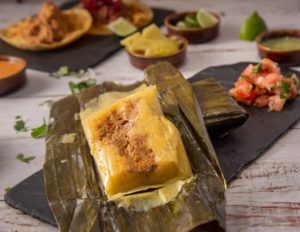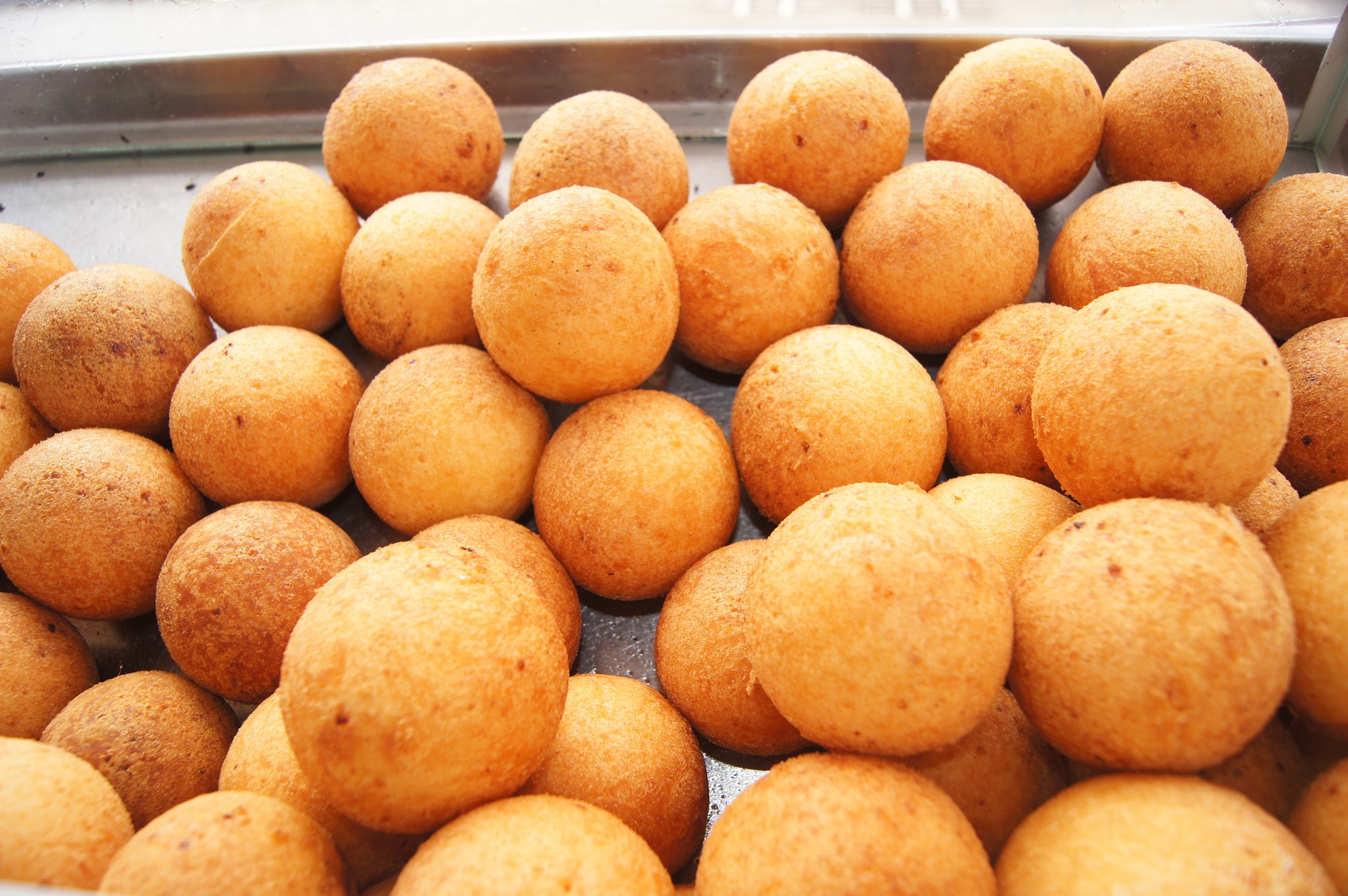It’s that time of year again.
Holiday music playing everywhere you go, sparkling lights, inflatable decorations adorning neighborhood houses and, of course, the smell of tamales in the air.
Many families are already placing holiday orders at their local tamales joints because, like the taco, the tamal has crossed cultural boundaries across the Lone Star State. But there are plenty, less famous Latino holiday foods waiting to get their due.
Taco journalist Mando Rayo, a 2022 James Beard Award nominee and host of the Tacos of Texas podcast, joined the Standard to dish out the details. Listen to the story above or read the transcript below.
This transcript has been edited lightly for clarity:
Texas Standard: Tamales have become a holiday staple to so many folks across Texas. But, you know, there’s more than just the corn husk tamal. There’s also a banana leaf version. Does that taste sweeter, or what’s the difference?

A banana leaf tamal.
Pexels
Mando Rayo: Yeah, no. I mean, it’s really a mix, to be honest. We’re used to, obviously here in Texas being so close to Mexico – and I mean, this was Mexico – so we have the corn tamales readily available, whether they’re the green chilies or the red chilies and pork and fat ready to go. But if you go, you know, into Central and South Mexico, as well as Central America, you have the banana leaf type of tamales. And they’re also called like “tamales Oaxaqueños.”
And so those are corn-based, which is a mix. You can have some that are vegetable-heavy, definitely have the meat variety and even some fruits. But it’s a little different because your traditional corn husk tamales usually have just the corn masa, some manteca and chilies and the protein, right? But the banana leaf, you can go, you know, full vegetarian, they can come with potatoes and garbanzo beans and peas and maybe add in some some chicken and pork. I wouldn’t say they wouldn’t be too heavy on the chilies, but they do come with that holiday seasoning – the anise, the cinnamon. And I think really when you look at, some of the ones that do have meats, they definitely kind of come in on the pork and you got to make sure that that corn masa is made to perfection with some manteca.
I hope you didn’t hear my stomach growling just then. There are plenty of sweet treats this holiday season we should touch on as well. You mentioned atole, for example.
Yeah, for sure. I mean, I grew up drinking atole during the holidays. It’s a great drink that’s kind of like a Mexican version of a very thick, hot chocolate. So it’s a masa-based drink. It’s simmered with corn and definitely like the spices of cinnamon and milk and a little bit of water. And I guess you can say it’s simmered until what you hear out there in the taco net, “until it’s creamy, thick and velvety.”
So what is “capirotada”?
Oh, capirotada. Man, I grew up with capirotada. It’s a great dessert. I mean, I guess if you want to describe it, people call it a Mexican bread pudding. The crazy thing is, first you have to get the bread – you know, the white bread or the bolillo or even French bread – where you actually slice it and then you put it in the oven, you make it a little bit hard. Then you top it with a mixture of cinnamon, piloncillo – which is that hardened brown sugar that you see at the Mexican markets – cloves, raisin, bread. And here’s a kicker: cheese. And then you pop it into the oven and then it becomes mushy again. You know, it’s great with some hot chocolate. It’s great with some atole. It’s definitely like one of those desserts that are hearty.
I’m going to throw another one out there: What about buñuelos? Is that more New Year’s food or what?
Yeah, yeah, for sure. You have the Mexican variety where … to be honest buñuelos can be found all over Latin America. So the Mexican buñuelos that you see, you see them at the panaderías – at the bakeries – where it’s just like wheat flour, deep fried, and it’s in the shape of a tortilla. And then you mix it in with some sugar and cinnamon, brown sugar. And, you know, it’s like a crispy dessert. But then you also have buñuelos of South America. You have the buñuelos Colombianos, which are basically … you know, the best way I can describe it is like these little corn balls.
















